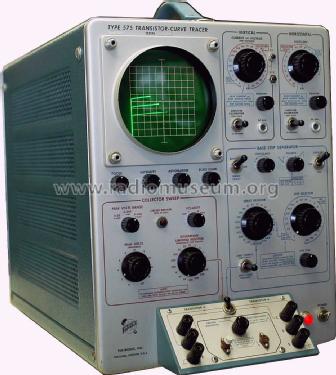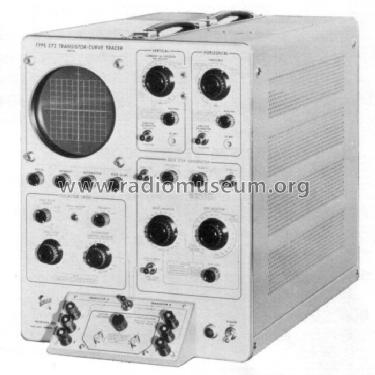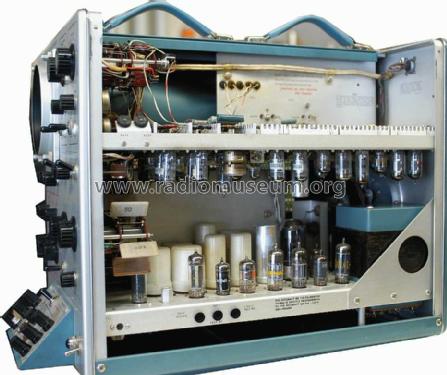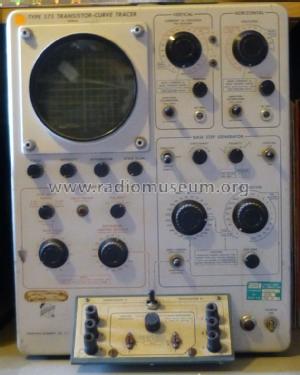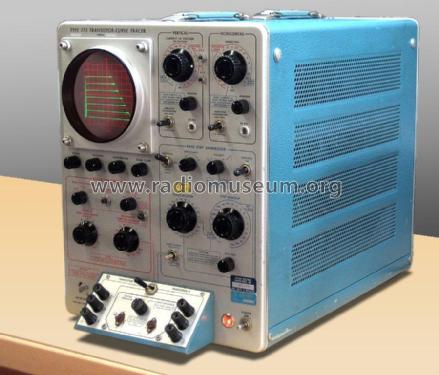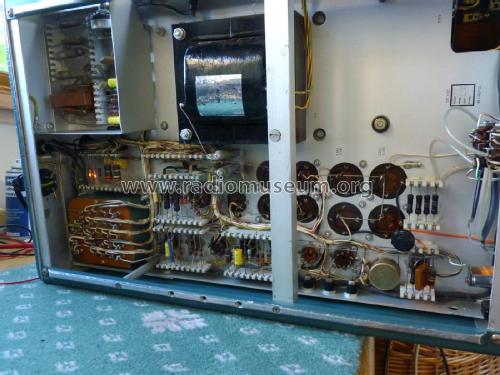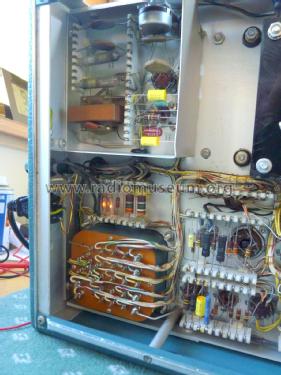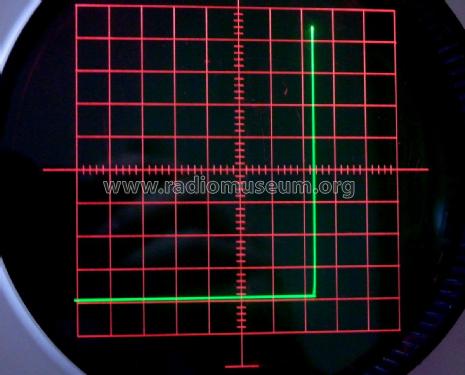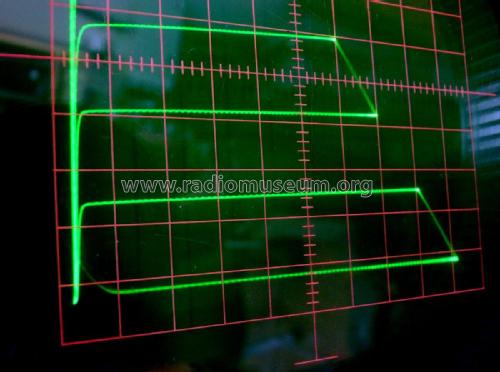Transistor Curve Tracer 575
Tektronix; Portland, OR
- Pays
- Etats-Unis
- Fabricant / Marque
- Tektronix; Portland, OR
- Année
- 1957–1971
- Catégorie
- Appareils de mesure et de dépannage (matériel de labo)
- Radiomuseum.org ID
- 116198
- No. de tubes
- 39
- No. de transistors
- 2
- Semi-conducteurs
- Gammes d'ondes
- - sans
- Tension / type courant
- Alimentation Courant Alternatif (CA) / 105-250 Volt
- Haut-parleur
- - Pour casque ou amplificateur BF
- Matière
- Boitier métallique
- De Radiomuseum.org
- Modèle: Transistor Curve Tracer 575 - Tektronix; Portland, OR
- Forme
- Modèle de table générique
- Dimensions (LHP)
- 13 x 16.7 x 24 inch / 330 x 424 x 610 mm
- Remarques
- The 575 Transistor Characteristic Curve Tracer to plot NPN, PNP and diode curves, simulating true operating conditions. Collector supply up to 10 A at 20 V and up to 1 A at 200 V. Base current up to 2.4 A. There is a companion 175 high current unit. There may be multiples of the valves listed. The CRT is not includedin the tube list.
- Poids net
- 32 kg / 70 lb 7.8 oz (70.485 lb)
- Prix de mise sur le marché
- 975.00 $
- Littérature
- - - Manufacturers Literature
- Schémathèque (1)
- Funk-Technik (FT) (11/1959, S. 392 - 395 / Beschreibung)
- Auteur
- Modèle crée par Emilio Ciardiello. Voir les propositions de modification pour les contributeurs supplémentaires.
- D'autres Modèles
-
Vous pourrez trouver sous ce lien 386 modèles d'appareils, 374 avec des images et 92 avec des schémas.
Tous les appareils de Tektronix; Portland, OR
Collections
Le modèle Transistor Curve Tracer fait partie des collections des membres suivants.
Littérature
Le modèle Transistor Curve Tracer est documenté dans la littérature suivante.
Contributions du forum pour ce modèle: Tektronix; Portland,: Transistor Curve Tracer 575
Discussions: 1 | Publications: 1
When I'd finished the restoration of this magnificent instrument, I noticed what appeared to be a dot-pattern on the trace. This was a mystery, as I didn't recall seeing this when the instrument was first powered.
Extensive investigations yielded nothing: there was no modulation on either the EHT, the grid or the X-plates. However, recalling that the colllector voltage sweep is derived directly from the mains supply (via transformers and an internal variac), I tried addng a 0.47uF X-rated capacitor across the output of the variac (shunt wiper to ground). This largely cured the problem, and confirmed that the noise was mains-derived. Subsequent correspondence with a gentleman in the USA who had exactly the same issue (blog at lazyelectrons.wordpress.com) confirmed the diagnosis; he traced the problem to a modern 9.5W LED lightbulb.
John Sykes, 01.Dec.18
